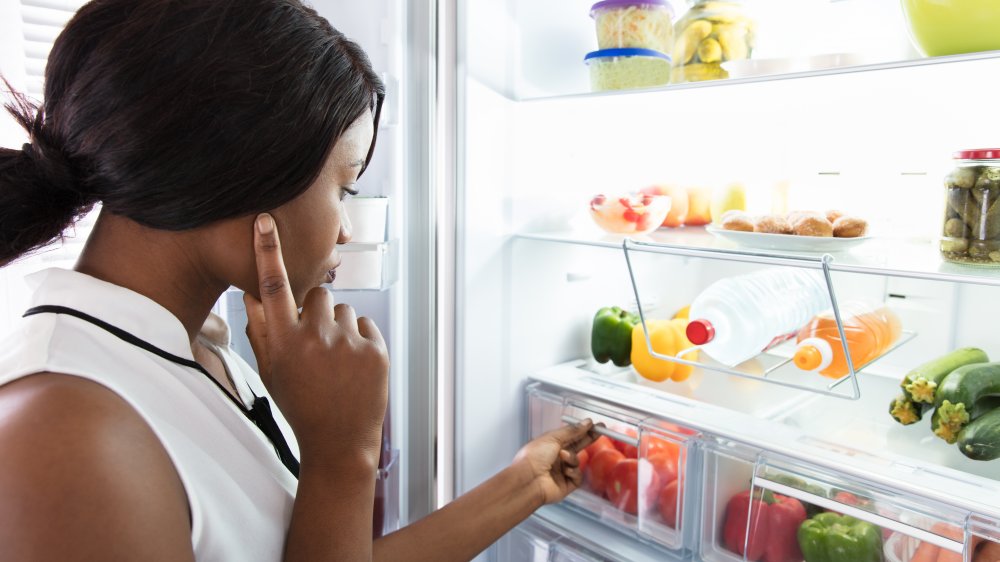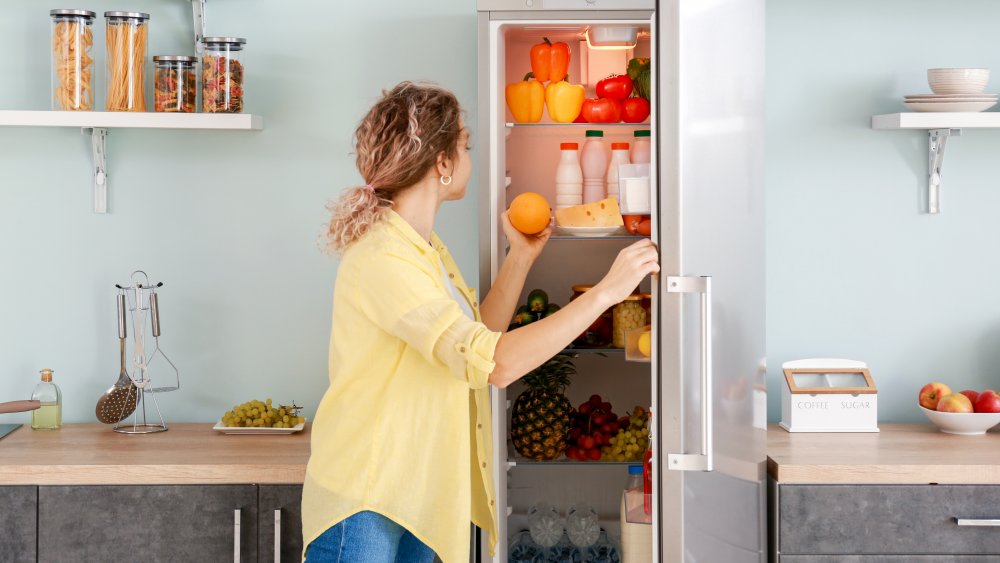You've Been Using Your Fridge Drawers Wrong Your Whole Life
If you've ever stocked up on produce only to have to throw it out a few days later, you may need to reassess how you're storing your food. We throw away a whopping 28 percent of the fruits and vegetables we buy, according to Consumer Affairs. "That is simply money in the trash," says Sonya Angelone, a spokeswoman for the Academy of Nutrition and Dietetics. Luckily, refrigerators come with crisper drawers, but these handy compartments are often taken for granted.
Used properly, these bins can help you save cash and also cut down on trips to the grocery store. "In the many years of research we've done, we've found over and over again that crisper drawers seem to be a mystery to the consumer in terms of how they work or how they should be set," says Mary Kay Bolger, senior product development manager of refrigeration at Whirlpool (via Martha Stewart).
Here's how to set up your crisper drawers
As the name implies, the purpose of a crisper drawer is to keep produce, well, crisp. Due to their high water content, veggies and fruits need to be stored in a more humid environment than the rest of the items in your fridge. And if you have two crisper drawers, you can separate your bounty into high- and low-humidity bins for optimal freshness by adjusting the setting for each drawer.
"By doing this, you're either opening a vent (low humidity) and letting humidity out, or closing a vent (high humidity) and keeping the humidity in," explains registered dietitian Alena Kharlamenko to Cooking Light. If no vents exist, you can assume it's a high-humidity drawer. Either way, Kharlamenko advises to avoid stuffing your crisper to the brim — about two-thirds capacity will yield the best results, she says, with heavier items placed in the bottom of the drawer so the lighter items don't get crushed.
Here's what not to put in your crisper
As for what to put where, a good rule of thumb is to store your veggies in high humidity and your fruits in low humidity, according to Michigan State University. Leafy greens such as lettuce and spinach are less likely to become dehydrated and shrivel up if kept properly. Likewise, apples and pears — which emit ethylene gases that speed up ripening — are less likely to decay with unwanted condensation. However, citrus fruits such as oranges and grapefruit require even less moisture and may be stored in the main part of the fridge rather than the crisper. And don't forget that some fruits and vegetables are better off on the counter. Tomatoes, for example, can lose their flavor and become mushy, while bananas cease ripening and turn black in the fridge. Meanwhile, potatoes, onions, and garlic are best kept in cool, dry environments.
Reminds Bolger of Whirlpool, maintaining basic order ensures you'll maximize freshness and throw out less produce. "Placing items that have a shorter shelf life in front will ensure that you see them first and use them before they spoil," she says.


